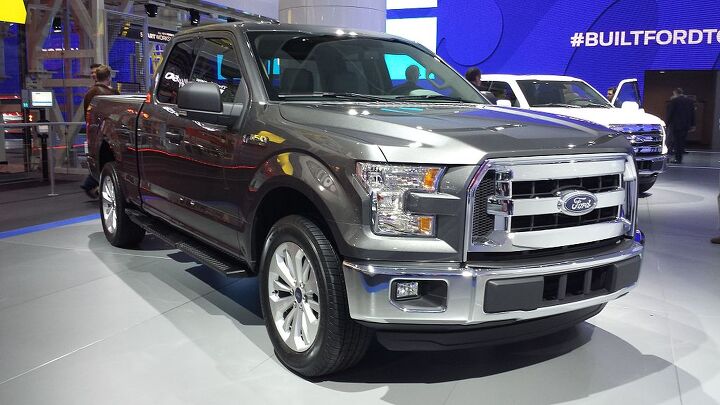IIHS: Not All Ford F-150s Are Built Just As Tough

Automotive News is reporting the Insurance Institute for Highway Safety will rate versions of Ford’s F-150 pickup with dramatically different safety ratings after re-testing versions of the pickup, which is a highly unusual move for the safety nonprofit.
The SuperCrew cab version of the F-150 earned the highest marks from the IIHS in its small overlap crash test, earning a Top Safety Pick rating. The re-tested SuperCab registers only a “marginal” rating in the same crash.
The difference, according to Automotive News, are tubular frames called “wheel blockers” installed on the SuperCrew, but missing from the SuperCab and Regular Cab models.
David Zuby, who is the chief research officer for the IIHS, said that the crash ratings between different cab versions could give buyers the wrong impression.
“(It) shortchanges buyers who might pick the extended cab thinking it offers the same protection in this type of crash as the crew cab,” Zuby told Automotive News.
A Ford spokesman said the company would look into adding additional safety measures into the Regular Cab and SuperCab versions of the F-150 for 2016.
The wheel blockers present on the SuperCrew, but missing on the SuperCab and Regular Cab, significantly varied the trucks’ performances on the small overlap crash test. In the follow-up test conducted on the SuperCab, the “intruding structure seriously compromised the driver’s survival space,” the IIHS told Automotive News.
The notoriously difficult small overlap test has been particularly difficult for automakers to solve. It’s unclear why Ford put the wheel blockers on the SuperCrew, but not the SuperCab and Regular Cab. Zuby offered a possible solution.
“I think automakers are trying to design the vehicles to offer the best protection for their customers,” he told Automotive News. “But occasionally, we do see evidence that maybe they are trying to get a good rating in a test, maybe without looking for a completely holistic solution.”
The IIHS tests only high-volume models. Historically the SuperCab and Regular Cab models only comprised 25 and 5 percent of sales respectively.

More by Aaron Cole
Latest Car Reviews
Read moreLatest Product Reviews
Read moreRecent Comments
- MaintenanceCosts Poorly packaged, oddly proportioned small CUV with an unrefined hybrid powertrain and a luxury-market price? Who wouldn't want it?
- MaintenanceCosts Who knows whether it rides or handles acceptably or whether it chews up a set of tires in 5000 miles, but we definitely know it has a "mature stance."Sounds like JUST the kind of previous owner you'd want…
- 28-Cars-Later Nissan will be very fortunate to not be in the Japanese equivalent of Chapter 11 reorganization over the next 36 months, "getting rolling" is a luxury (also, I see what you did there).
- MaintenanceCosts RAM! RAM! RAM! ...... the child in the crosswalk that you can't see over the hood of this factory-lifted beast.
- 3-On-The-Tree Yes all the Older Land Cruiser’s and samurai’s have gone up here as well. I’ve taken both vehicle ps on some pretty rough roads exploring old mine shafts etc. I bought mine right before I deployed back in 08 and got it for $4000 and also bought another that is non running for parts, got a complete engine, drive train. The mice love it unfortunately.


































Comments
Join the conversation
Smells like a band-aid added to deal with a unique crash issue on that version that happens to help small overlap as well. Otherwise why bother with the complexity of not having it on everything?
I'm not going to lie. I've watched a new F150 crumple like a Landwind tin can on the IIHS Youtube channel maybe a dozen times now. Do I want a new Mustang or Focus RS any less now? Nope. Considering how fast I'd hit whatever immovable object in either of those, they could be made of paper-mache for all I care.